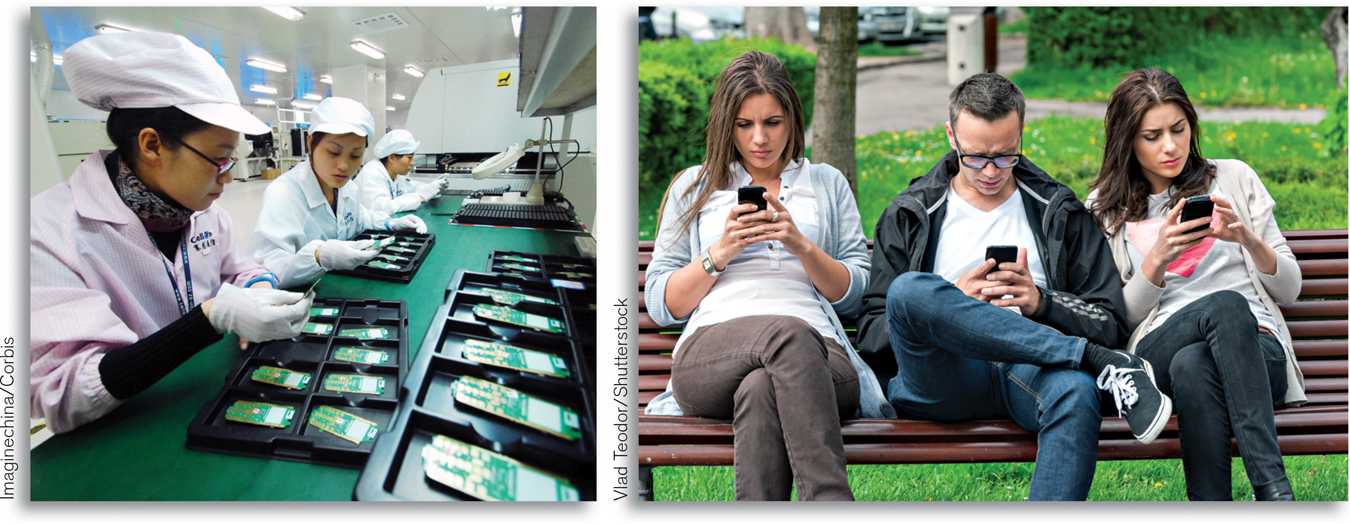International Trade
6
 What You Will Learn in This Section
What You Will Learn in This Section
How comparative advantage leads to mutually beneficial international trade
The sources of international comparative advantage
Who gains and who loses from international trade, and why the gains exceed the losses
How tariffs and import quotas
cause inefficiency and reduce total surplus
Why governments often engage in trade protection and how international trade agreements counteract this
THE EVERYWHERE PHONE

“WE FELL IN LOVE WHEN I was nineteen / Now we’re staring at a screen.” These lyrics, from Arcade Fire’s 2013 hit song “Reflektor,” describe an era in which everyone does indeed seem to be staring at the screen of a smartphone. Apple introduced its first iPhone in 2007, and since then the iPhone and its competitors have become ubiquitous.
They’re everywhere—
In fact, a study of the iPhone 4 estimated that of the average factory price of $229 per phone, only around $10 stayed in the Chinese economy. A substantially larger amount went to Korean manufacturers, who supplied the display and memory chips. There were also substantial outlays for raw materials, sourced all over the world. And the biggest share of the price—
So where do iPhones come from? Lots of places. And the case of the iPhone isn’t unusual: the car you drive, the clothing you wear, even the food you eat are generally the end products of complex “supply chains” that span the globe.
Has this always been true? Yes and no. Large-
This section examines the economics of international trade. We start from the model of comparative advantage, which, as we saw in Chapter 2, explains why there are gains from international trade. We will briefly recap that model here, then turn to a more detailed examination of the causes and consequences of globalization.